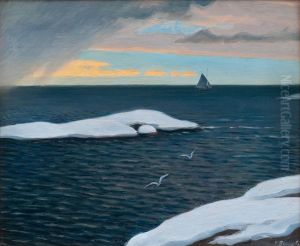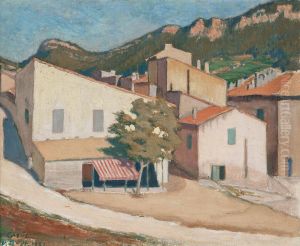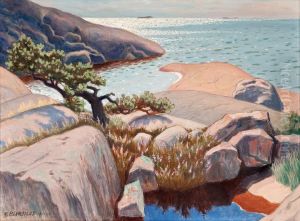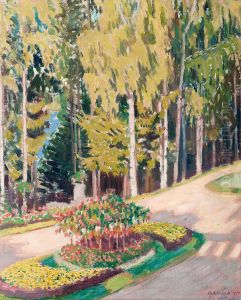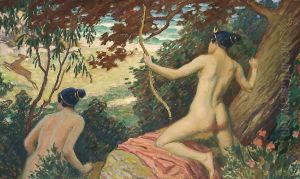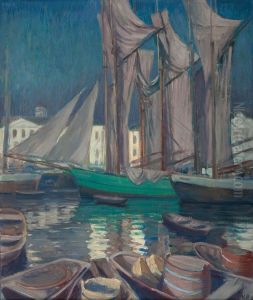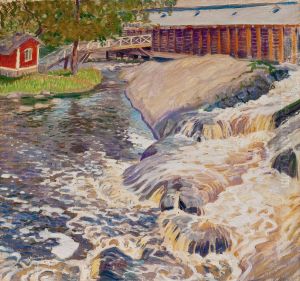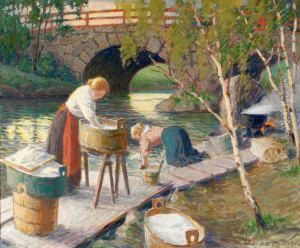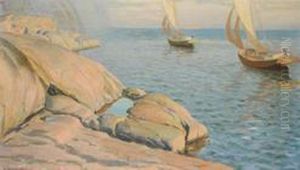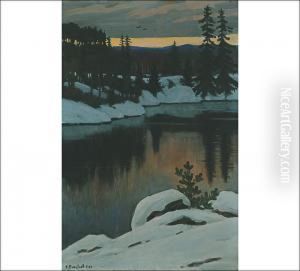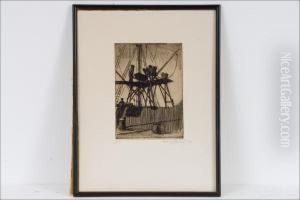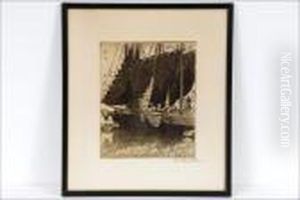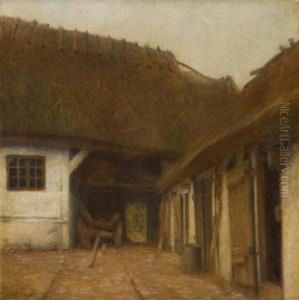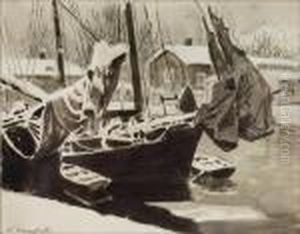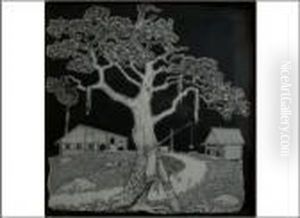Vaino Blomstedt Paintings
Väinö Blomstedt was a distinguished Finnish painter and art teacher, born in 1871 and passing away in 1947. His artistic journey is emblematic of the rich cultural tapestry of Finland during a period that was pivotal for its national identity and artistic evolution. Blomstedt's work is often characterized by its intricate detailing, vibrant colors, and the ability to capture the essence of Finnish landscapes and people with a profound sensitivity and emotional depth.
Blomstedt's educational background in art began at the Finnish Art Society's drawing school, and he further honed his craft at the Académie Julian in Paris, which was a hub for aspiring artists from all over the world at the turn of the century. His time in Paris was influential, exposing him to the currents of modern art and allowing him to integrate these insights into his own unique style. Despite the influence of European art movements, Blomstedt remained deeply rooted in Finnish traditions, often drawing inspiration from the country's landscapes, folklore, and everyday life.
Throughout his career, Blomstedt also dedicated himself to education, teaching at the Central School of Arts and Crafts in Helsinki. His pedagogical work had a lasting impact on the development of Finnish art, nurturing a generation of artists who would go on to define the visual culture of Finland in the 20th century. His legacy as an educator is paralleled by his contributions to art organizations and exhibitions, which helped foster a vibrant art scene in Finland.
Blomstedt's personal life, like his professional one, was deeply intertwined with the artistic community in Finland. He was part of a network of artists, writers, and intellectuals who sought to define Finnish identity through their creative endeavors, especially in the context of Finland's push for independence during his lifetime.
His works, which span landscapes, portraits, and genre scenes, are held in high regard and can be found in major Finnish museums, including the Ateneum Art Museum in Helsinki. These pieces not only showcase his technical skill but also serve as cultural artifacts that offer insights into Finnish society and the natural world during his lifetime.
Blomstedt's death in 1947 marked the end of a prolific career that contributed significantly to Finnish art. His legacy endures, not only through his paintings but also through his influence on generations of artists and his role in shaping the course of Finnish art history. Väinö Blomstedt remains a revered figure in Finland, celebrated for his artistic achievements and his commitment to fostering an appreciation for art in his homeland.
